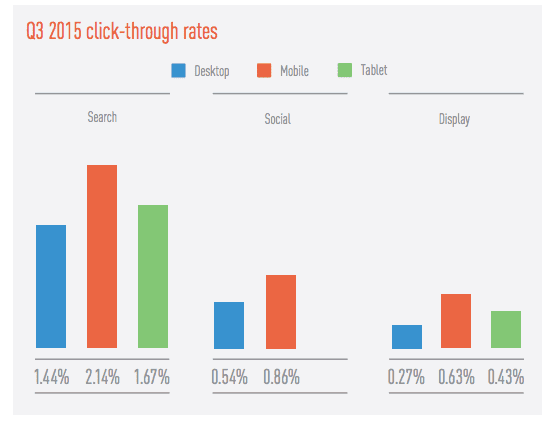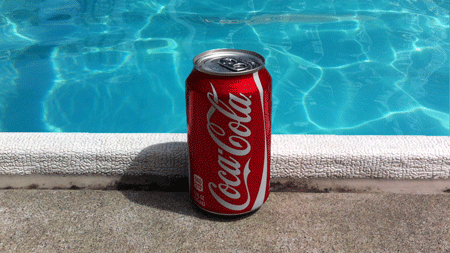5 Ways Cinemagraphs can Facilitate Visual Content Creation for Brands
Cinemagraph is among the hottest fads in the design industry. If we just go by the definition, a cinemagraph is a still image with one or more moving areas to it.
In reality, however, cinemagraph is more than this cursory definition. Eric Haskell has explained in his article how animated GIFs will replace videos and images. Cinemagraphs are in animated GIF format.
Visual branding is now in the focal point of brands because it helps them in authority marketing.Cinemagraphs are becoming increasingly popular and are lending brands a hand in visual content promotion.
Resurgence of aesthetics
With visual content becoming more important than ever before, a resurgence of aesthetics seems very likely. Cinemagraph has a major role to play in this. It’s not that still images don’t invoke aesthetic feelings, it’s that cinemagraphs increase such feelings ten times.
See the image below:
The visual is a GIF file and it shows a picturesque scenery with torrential streams of water flowing across it. Now see the static version of the image below:
The second image is marvelous no doubt, but it doesn’t emit the same degree of elegance that the first image does. Both images are aesthetically pleasing, only the first image is more pleasing than the second image.
The difference between the two images is subliminal, but the impact it makes is colossal. Brands often complain that they don’t get enough time to lure people; it’s a legitimate complaint because an average webpage doesn’t get more than 15 seconds of attention from visitors, and every 1 second delay reduces this timespan.
As cinemagraphs are aesthetically appealing, they can hold visitors for long, thereby increasing the retention rate and making visual content marketing more effective.
Digital advertising
Due to excessive brand promotion, aesthetics was somewhat lost on us. The priority of brands was to convince people to buy from them; they never prioritized aestheticity in their adverts. As a result, digital advertising soon reached a point of saturation.
Cinemagraph can put an aesthetic damper on an otherwise boring ad. At the crux of digital advertising, there’s nothing but uncertainty. No matter how great is the design, no matter how catchy are the texts in the ad copy, there’s no guarantee that the ad will get the desired number of clicks.
However, high-quality content and correct ad placement can increase the CTR; anyone, who’s familiar with advertising pricing methods, knows its importance.
See the image below:

The details shared by Smart Insights show there’s a substantial gap between ad CTR through regular media and that through rich media. Of course, ad placement is also a factor; if put above the right sidebar, an ad with rich media elements can fetch an optimal CTR.
Now see another image below:

The image above shows when it comes to display ad CTR, mobile devices fare better than other devices. Insights, obtained from the two back-to-back images indicate ads with rich media targeted for mobile users can register the highest CTR.
Is there any visual content type that qualifies as a gallimaufry of this sort?
Yes, the answer is mobile cinemagraph. It can make digital advertising better performing and more ROI-driven. And the best thing about mobile cinemagraph is there are plenty of mobile apps, for Android and iOS users alike, allowing even amateurs to create cinemagraphs on their Smart devices.
In short, cinemagraph has the potential to change the face of digital advertising.
Increase social footprint
Social media is now the hotbed of visual content. Images and videos have long been there. Cinemagraphs have lately been added to the list along with animation. What’s interesting is animated content can now be user-generated. Software solutions like Moovly, GoAnimate, ToonDoo let everyone create animation.
ToonDoo is for rendering cartoon strips, but Moovly is for core animation and multimedia content creation; the tool simplifies the process by letting the animator use library objects and merge them with images and video clips of their own. Then there’s GoAnimate, an overview which shows its awesome collection of pre-animated characters and backgrounds, and the drag and drop interface.
Using such tools, the new-age visual content can be created. But how can brands harness such content? You may ask.
Brands engage in two types of marketing on social networks; organic and paid. The success of both types depends on the number of audience footprints. Brands desperately want to increase the number of footprints so that their campaigns become a success. Cinemagraphs shared on social media can make it happen.
As for social media ads, Facebook was reported to integrate cinemagraphs in its advertising platform. According to experts, if advertisers put ads with cinemagraphs on social media, then it’d have a positive impact on the CTR.
Bandwidth consumption
Cinemagraphs consume less bandwidth compared to other media formats, especially videos. You might argue that bandwidth-economy applies to cinemagraphs only when these are non-HD.
HD cinemagraphs consume a lot of bandwidth. On the bright side, such cinemagraphs show a smooth loop, vivid description of details and a remarkable array of colors.
To make HD cinemagraphs less bandwidth consuming, you could use signature technologies like embed-code, which reduces the size to almost 40% of the original file size, accommodate millions of colors and speed up the loading time.
And in case you are using regular animated GIF files, the size would still be reasonably less if compared with a video. Unless the page has too many of such files, the loading time won’t be slow.
Brand storytelling
Brands are eager to tell their stories to audiences using visual content. With cinemagraphs, they can overcome some of the existing bottlenecks. For example, HD videos get too many views both onsite and across social networks, but making such videos is expensive.
Videos involving professional models are expensive, which is why, most brands prefer animated videos. 2D animation is on its way to become a thing of the past because of growing importance of 3D animation. But the average cost of a 3D animation video with a professional touch to it, is between $25K and $50K.
Producing a cinemagraph is neither expensive nor time-consuming. Yet, it can tell a brand’s story, with a sublime tone, leaving the audiences thinking about the story.
Below you can see such a cinemagraph:

We see a Coca-Cola can on the surrounding tiles of a pool, and the water is moving. Who put the can there? Where is he? Is he swimming in the pool? Or elsewhere? A story begins with questions such as this, even if it’s a brand’s story.
The future
Let’s refer back to what Eric suggested in his article, that images and videos will face tough competition from animated GIF content in the near future. Cinemagraph, in my opinion, will be the harbinger of this transition.
William Johnson belongs to the most creative field of digital media: web design! Currently, he is obsessed with the latest trends in e-commerce development, search engine optimization techniques, and social media analytics. He has been a regular contributor to leading online portals such as SEMrush, SmallBusinessTrends etc.


